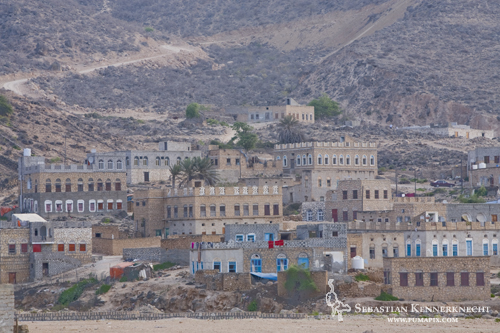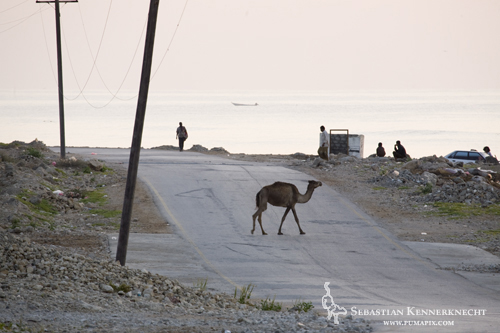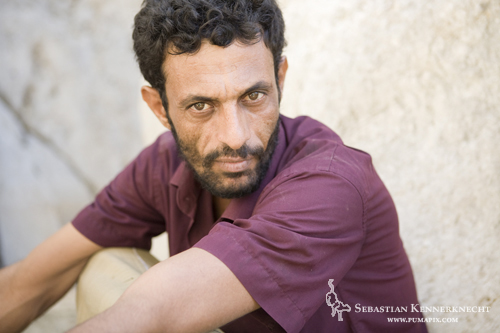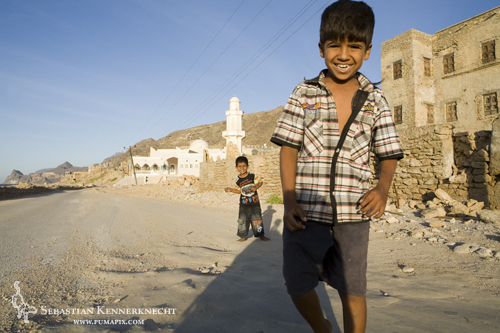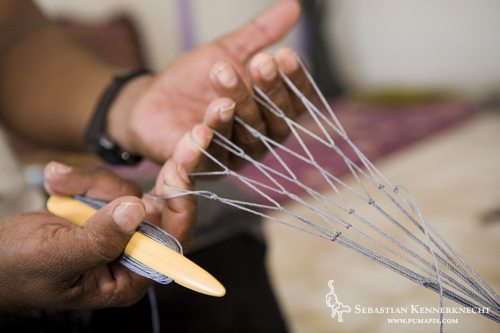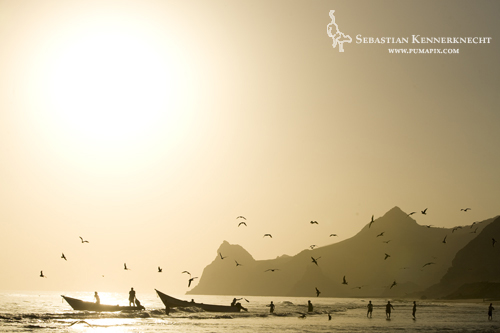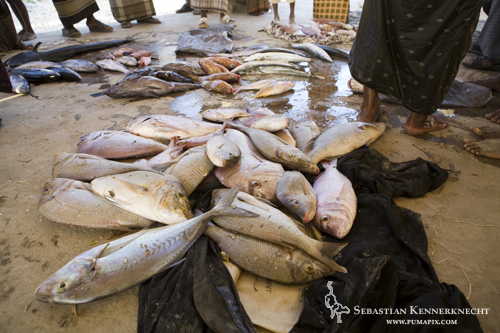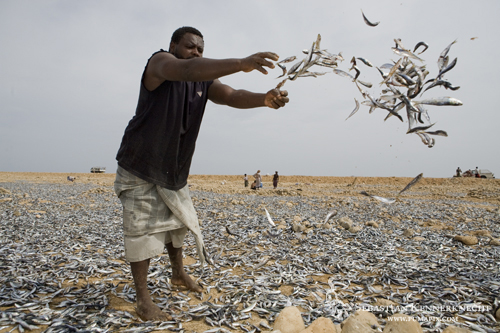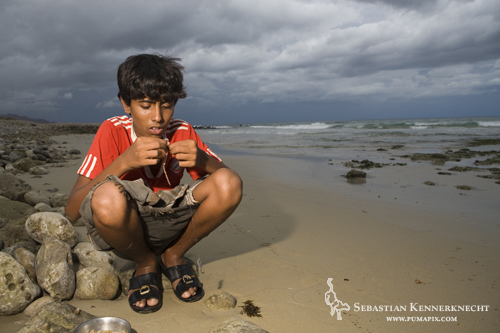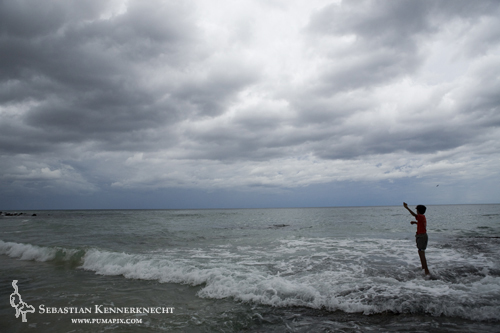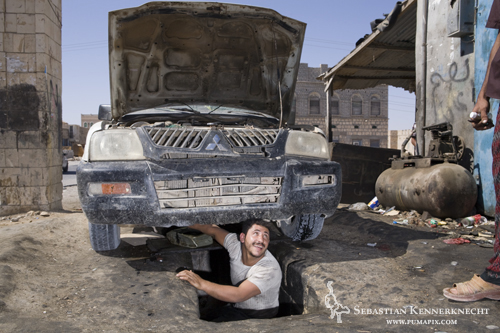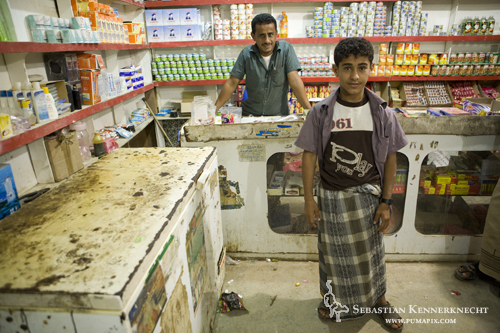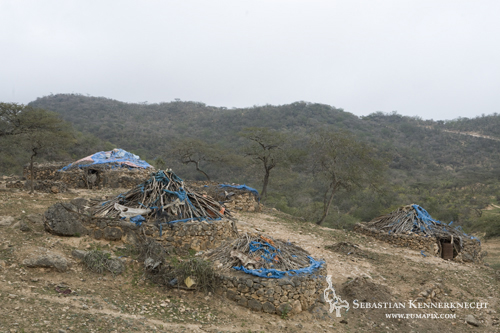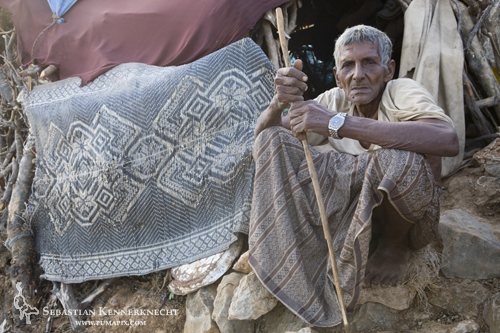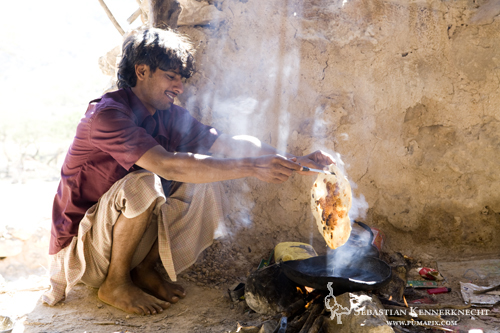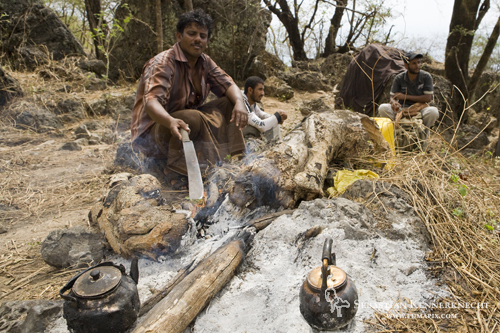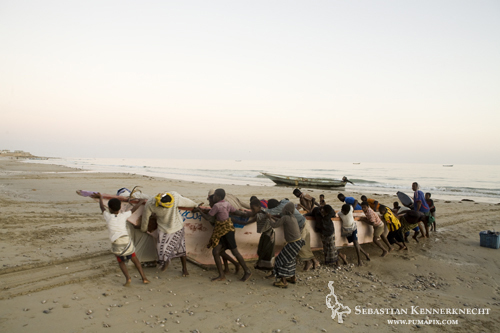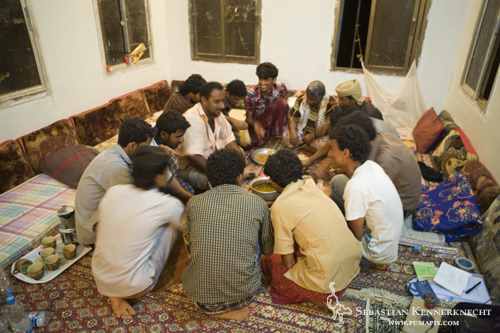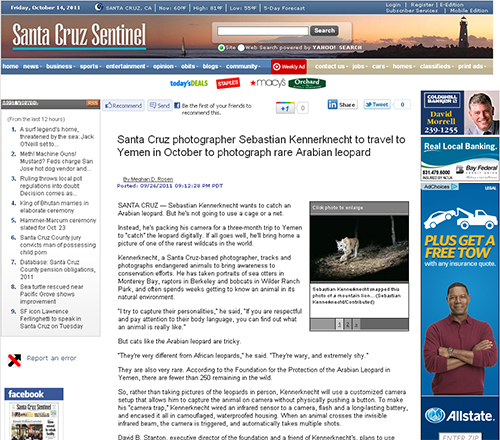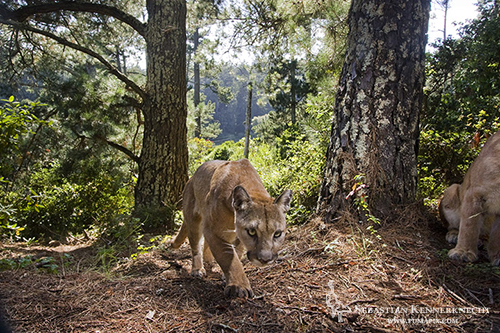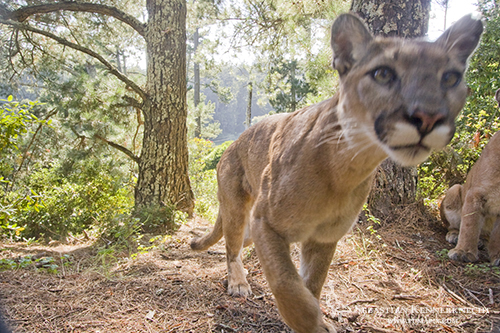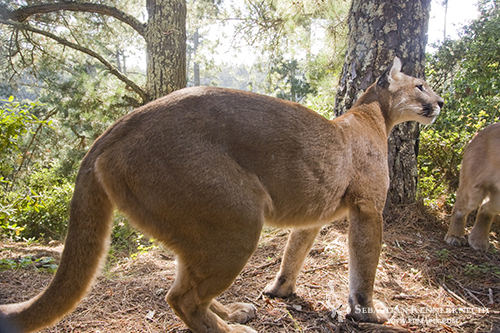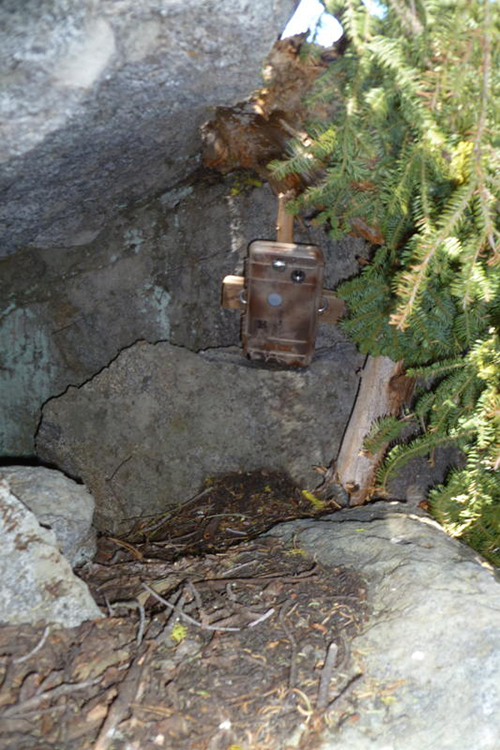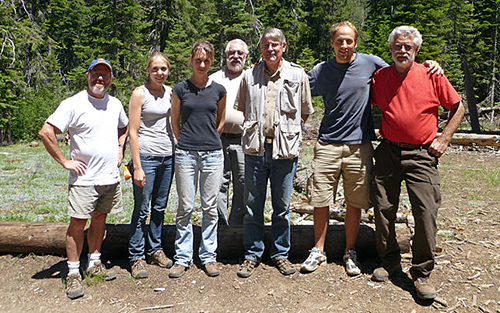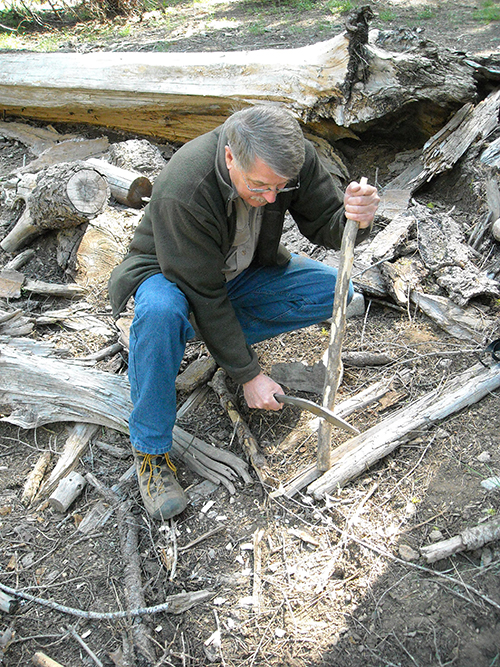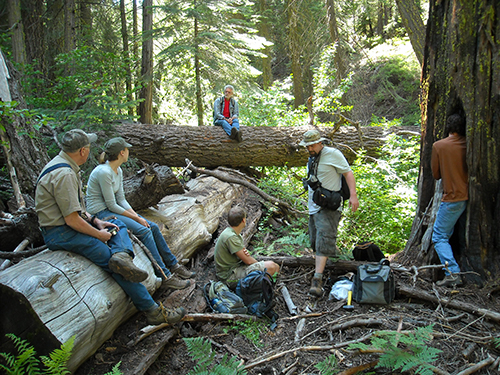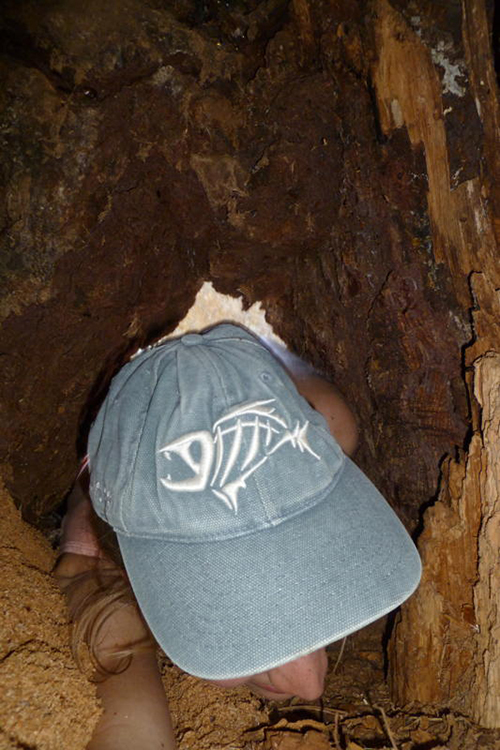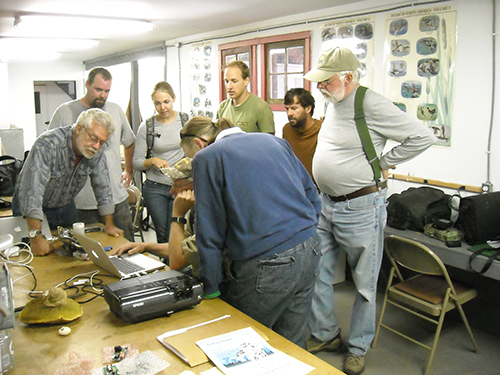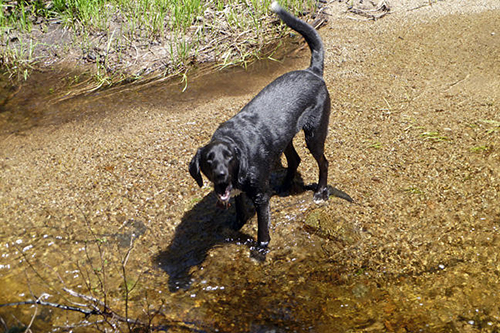There are a few blogs I really love to read and I thought I would share them with you to check out as well.
Jake and Christian are not only friends but they write a great blog about camera trapping as well. They concentrate most of their camera trapping efforts around the UCSC campus, therefor the name Camera Trapping Campus (though to be honest this is me just assuming that) as well as in Marin county. They are maximizing the use of their pictures by sharing their insights on how the pictures were achieved through their blog as well as in the classroom.
They were both nice enough to answer a few questions that I think can provide a very helpful tool for your own camera trapping adventures and its applications. Plus if you have a chance to check out their blog you will get hooked, just as I was about their nature adventures!
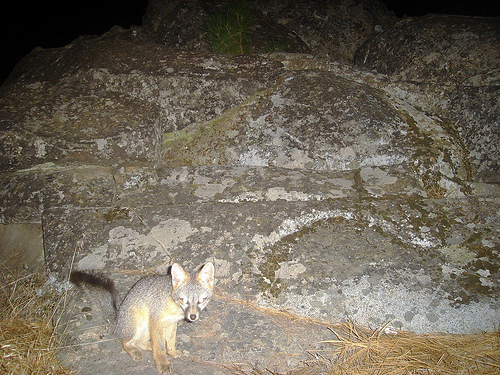
Camera Trap Image: Gray Fox in Sierras – Copyright Jake Kirkland
Q: How did you two first get into camera trapping?
Jake: I first got into Camera trapping when I found a picture on the internet. It was of a bobcat carrying a gopher snake in its mouth. The picture was taken in Marin County near where I grew up which was extra exciting. I learned that it was taken by a camera trap and by this scientist who ran a blog and just happened to teach a class on the art of camera trapping. As I am sure you know by know the blog was www.cameratrapcodger.com and the scientist was Chris Wemmer AKA The Codger. Well the class was happening in three weeks and I was not going to be able to attend, so Christian, Sean and I vowed to take the course the following Summer, which we did. I got an off the shelf camera the Christmas before the class, but only got to try using it a few times before the course. At the course we got a chance to use homebrew cameras which I had always wanted to use. After the course the Codger, held a workshop for four of us at the Cal Academy where we learned to hack our own cameras. I should also mention that I had been a reader of http://natureofaman.blogspot.com/ and Randomtruth was also taking the course. We all became friends and have gotten to do some great camera trapping together over the last year and a half.
Christian: About two years ago, I was searching online for any tips on sea caves to explore in Point Reyes. The Codger’s blog came up as a search result — of course a post about Mountain Beavers — and I was immediately intrigued. I had never heard of a Mountain Beaver before or camera trapping and the idea of photographing all of these amazing creatures was an truly thrilling concept. I think I immediately emailed Jake, completely stoked on pursuing the idea. One thing led to another and the next summer I was enrolled in the Codge’s Sierra Workshop.
Q: What would you consider the advantages and disadvantages of camera trap photography?
Jake: The biggest advantage for me is it allows me to do some wildlife photography when I really don’t have much time for it. With a camera trap I can spend a half a day once a month setting up and picking up cameras and get some good shots. Another advantage is that since you are not around to scare the wildlife, you may get some good behavior that you would not get stalking them or from a blind. The major disadvantage is that you don’t get to frame the shot as you would with traditional photography. One of the best things I learned from the Codger is to frame your camera trap shots with an eye-catching background. I still have a long ways to go in improving on this.
Christian: The advantages of camera trap photography would be time efficiency, safety in regards to both humans and animals and also the ability to capture reclusive animals that are virtually impossible to capture with live photography.
From what I have experienced, the disadvantages are primarily not being present to monitor the cam — those pesky problems of batteries running out, a leaf or branch that has grown over the lens, or even pickiness over how the animal is framed. However, for the latter issue, a skilled cam trapper can develop skills to create a set that has a high probability of success in terms of framing.
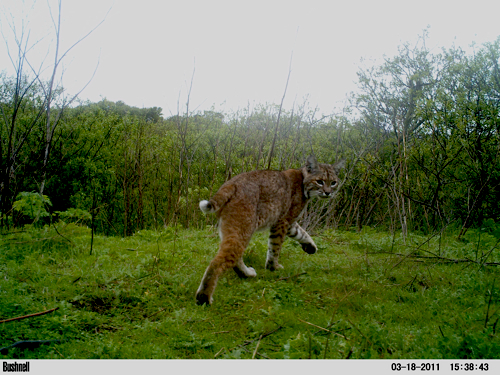
Camera Trap Image: Bobcat – Copyright Christian Naventi
Q: How do you select a specific site to set up a camera trap?
Jake: Try and think like the animal you are trying to get on camera. Would they walk through this path? Would they stop at this rock to look around? Would they step over or go around this fallen tree? The other major decision you have to think about is whether it will be a general set or if you are going for a target species. You have to set the camera up different if you are going for a small rodent versus a larger predator. With the homebrew cameras you have to keep in mind the rising or setting sun or heat waves coming off of rocks causing false triggers. Now I am trying to frame more artistic shots, but we will see how that goes.
Christian: If I am going for a specific animal, then it is based on clues in the environment — scat, trail crossroads, middens, etc. Other than that I am thinking of views that I enjoy. I am a big fan of the birds-eye-view and I like climbing trees anyway. Log sets are also attractive; you just know that some critter is going to ramble across and I think it presents as a striking image.
Q: Are people surprised by the animals you two have photographed on a University campus?
Jake: People here at UCSC are usually surprised, but in a way they are not because they see a lot of these animals in their day to day movements. On the other hand, other people certainly get very surprised. I personally was not surprised by the species showing up on camera but was pretty surprised by the apparent predator density. At the ~26 acre Younger Lagoon Preserve we have images of at least three different individual coyotes and three different individual bobcats. There are quite a few brush rabbits around, but that is still a lot of predators in a small space.
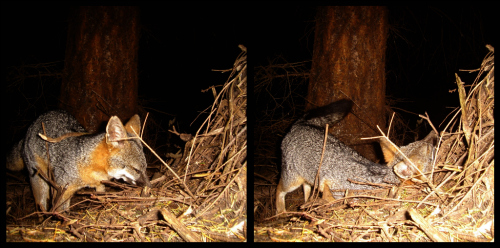
Camera Trap Image: Gray Fox – Copyright Christian Naventi
Q: Jake, it looks like you are a big herp fan. Any plans to do some creative herp camera trapping? If so, what obstacles do you think you will have to overcome?
Jake: I guess the biggest hurdle is getting an endotherm to set off the passive IR sensor. A few herps get warmer than their environmental surroundings, but not all. Tortoises are one and I would love to try and camera trap Desert Tortoises in the Mojave Desert. I have gotten Scelopera on camera before, but I am not convinced yet that they were the ones that triggered the camera but it may be possible. Last Winter in collaboration with the Codger we got a picture of a raccoon with a Dicamptodon or Giant Salamander in its mouth. So we have plans to trap pools with larva in them and hope to catch another predation shot. If I had a camera with an active IR sensor, where the animal cuts a beam to trigger the camera, I would love to trap a rattlesnake den in the spring and get pictures of them coming in and out of the den as they come out of hibernation.
Q: Christian, how do you use camera traps in your classroom? What grade do you teach and do you think there is a way to incorporate aspects of camera trap photography at other grade levels?
Christian: For the past two years I have been teaching in a middle school classroom at private/non-public special ed school. I have used camera trapping with the students at Audubon Canyon Ranch in Bolinas. It has been included loosely in the classroom as a means for the students to interact with the outdoors rather than simply observing. The trapping around our school has been with an after-school Science Club, where students were examining what species were living in a more urban environment.I have been creating a true camera trapping curriculum in my head over the past years where students would tie together aspects of pure research, physical activity outdoors and an element of service learning where they can advocate for care and protection of land/species in their community. I hope to have that actually finished for next school year.One of the great features of my school is the collaboration that exists between staff. The high school class this year is teaching an Environmental Science class and elements of camera trapping will tie in with that curriculum. In general, I believe camera trapping can be a useful tool to introduce students to different environments, animals and their behaviors. The payoff for only a small amount of work can be quite fantastic.
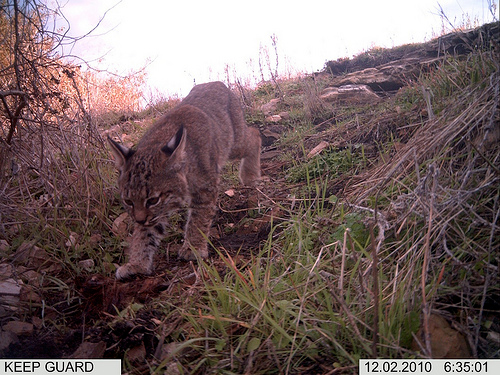
Camera Trap Image: Bobcat – Copyright Jake Kirkland
What are the next steps for you guys? Are there specific target species you would love to capture on your camera traps?
Jake: We still have many many goals we have yet to achieve. No Mountain Lion yet and every camera trapper needs one of those in the bag. I aim to get kit foxes next year in the Mojave Desert. That should be a very attainable goal. I would also love to get ringtail and the Mojave may be a place for that. We both are very excited by trying to get Red Tree Voles back in Sonoma County in collaboration with the Codger. I have yet to get a bear or a Mountain Beaver on one of my cameras so that will be the goal for the Sierras next year. I will have no excuses for not being able to get either of those after the great success others had up there this past season. For Santa Cruz I really still want to get Long-tail weasel. They may or may not be in YLR but they are certainly within a few 100 meters of there so hopefully we can catch a wanderer in the reserve. I also think it would be a ton of fun to take a camera or two with you on vacation. I love to go to Central America and even on short sets I could get some really fun things. Now to figure out a way to actually go on vacation while still in grad school.
Christian: Aside from the aforementioned curriculum, I have a few fantasy projects. One being camera trapping the endangered Pomo Tree Mouse in Sonoma County with cameras high up in Doug Fir trees. I have also caught the ringtail fever and am curious if any are still around the North Bay and Napa County. The annual Mojave Desert trip that has been blogged about on our site is something that I hope to finally participate in next spring. Kit Foxes!
It sounds like you guys really agree on these issues (especially since you answered these questions independently) which is exactly what makes your blog one entity, rather than two individuals writing it. Keep up the great work guys, we are all looking forward to follow you and see what new things you can come up with!

